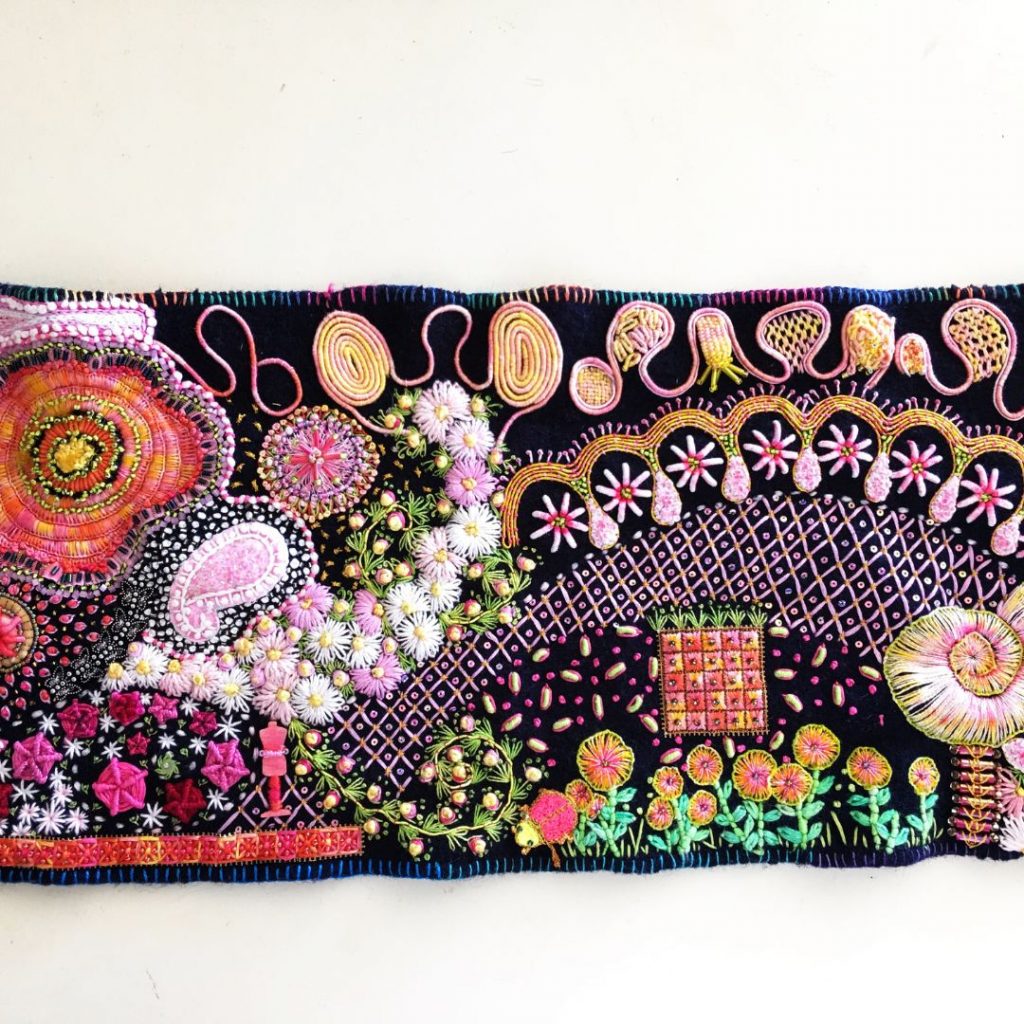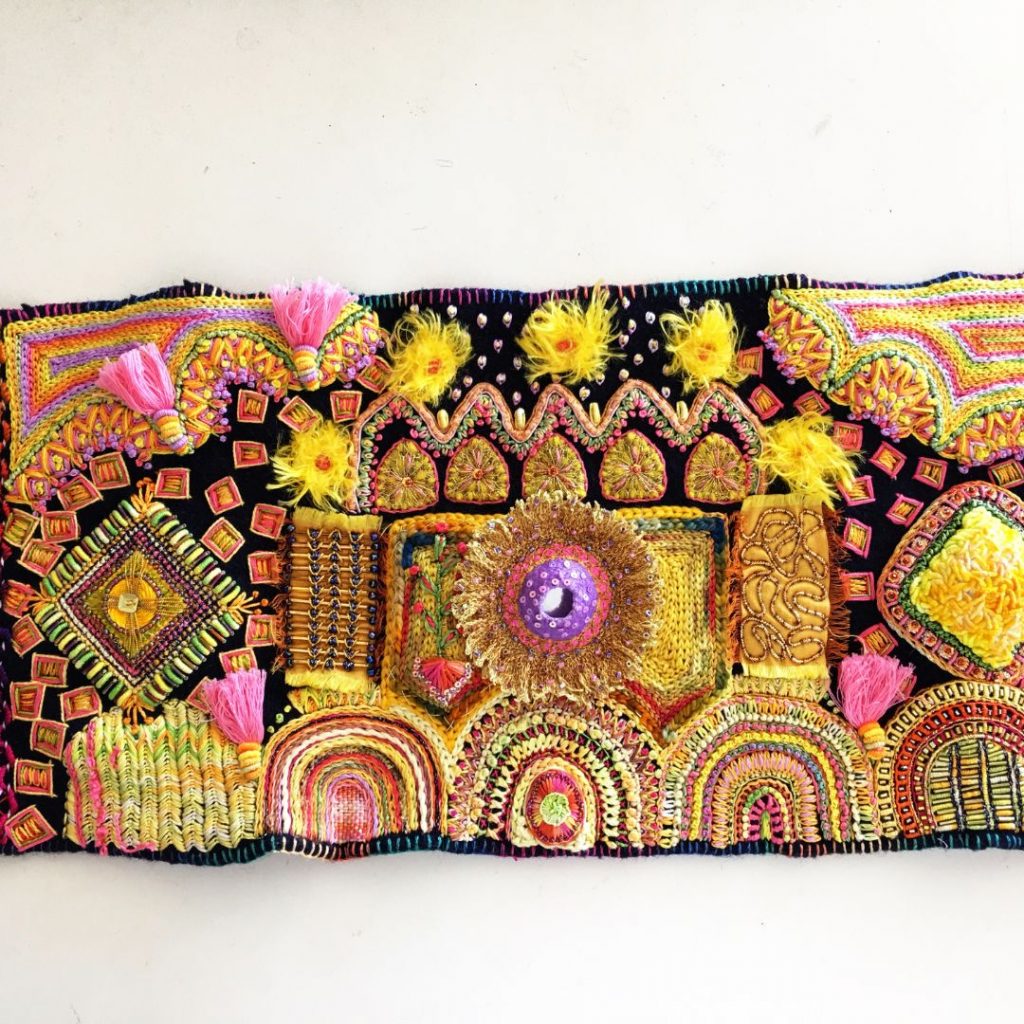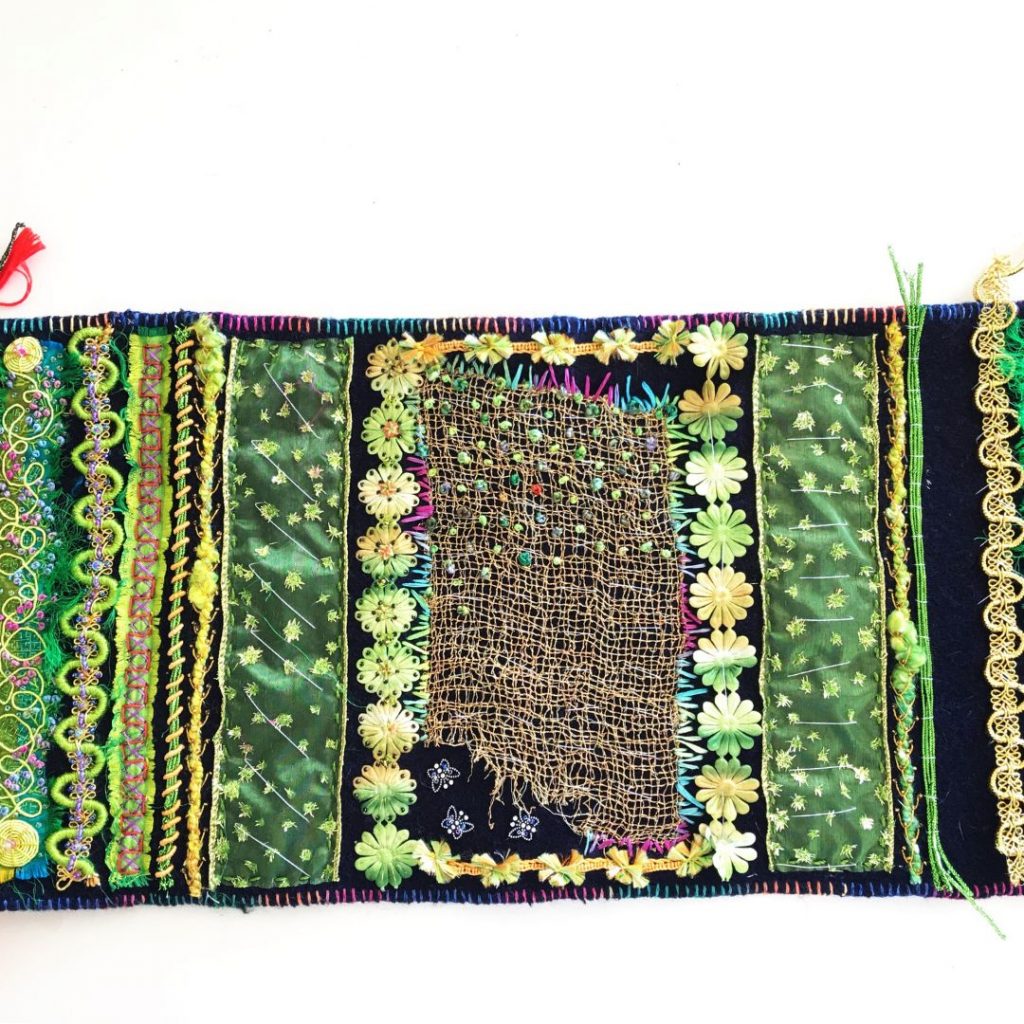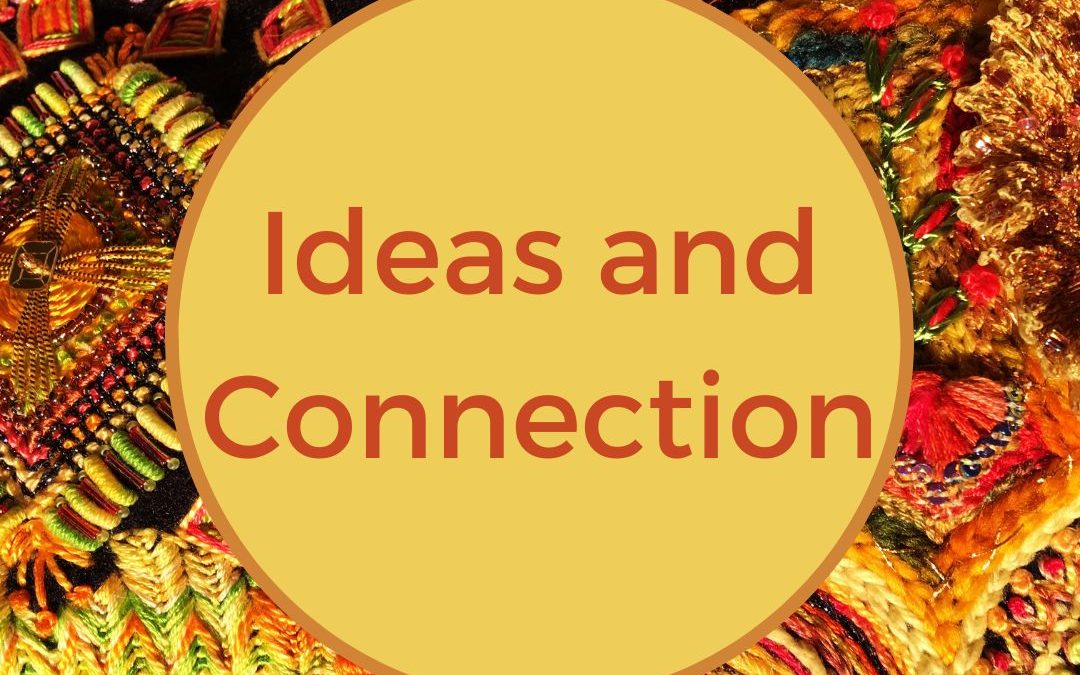Ideas and Connection, are two often-used concepts used in the world of textile art – but how do you apply them?
You have to go back to the basics.
What I’ve discovered is that by pushing the boundaries of not working with a preconceived pattern or design, the whole focus of the success of the work revolves around both those concepts as well as your individual design aesthetic.
It’s a real learning curve, so you have to trust yourself and your instincts.
A quick YouTube visit will usually result in a number of videos on the ‘how-to’ of a technique, but sampling them, having an idea and connecting that with other stitches and patterns within the emerging design, in a pleasing manner, is the important thing here – and it’s not easy.
It is, however, so worthwhile in my opinion, drawing upon a design ability you may not have even thought you had – or making you draw upon it may be closer to the point. That’s been my experience anyway.
But you have to be fearless.
So, I’ll recount my experiences where this whole notion of ideas and connection blossomed.
There was no plan. Each navy blue woollen panel was a joy to stitch into. But this is not fine needlework – it’s robust, gutsy work and the threads and embellishments used need to suit that ground fabric, so they’re robust and gutsy too.
My first idea was to make each panel different by using a separate family of colours for each, lifted by the use of a variety of contrasts in colour, line, shape and texture.
This gels with the way I now store my threads and embellishments, meaning that I simply work from two clip-lock bags for each colourway – one containing various threads and the other beads and embellishments.
So, already, at a glance, I have an abundance of choices for surface stitching and embellishment.
How do I connect that with the fabric without a pre-determined design?
This was the hard part for me. I had a gorgeous selection of threads that I was really excited to use, but it really came down to the size of the panel to be filled – and I just had to start somewhere, anywhere, so that’s what I did, with a simple line or shape.
In the first primarily pink panel, I did lightly draw a large arching line directly onto the wool using a yellow pencil. This was the epicentre from which everything else evolved – and from that one line came other smaller arching shapes, meandering shapes, and flowing shapes expressed in a variety of embroidery stitches and techniques using various weights of thread.

In the second primarily golden yellow panel, it all began with two small rectangles of appliqued silk, set above five repeated arches, absolutely brimming with embroidered and beaded colours and textures. Above all of this is a canopy of five discs wrapped with an extremely fluffy thread, five church-window shapes offering further avenues for stitch, finished with six pink tassels attached using a gelato mix of bullion stitch, two still to be worked.

In both these panels I’ve re-used parts of previous embroideries, such as canvas work, and a machine embroidered piece I never seemed to have a use for.
The third panel is devoted to a world of green represented by strips of fabrics and threads. I think this one will be devoted to a medley of Crazy Patchwork embroidery stitches, but here again, I’ve re-used a piece of golden machine-made mesh, made some time ago.

And the beauty of working this way is that each panel has its own personality and vibrancy, echoed throughout by the use of colour, line, shape and texture – yet using very similar stitches worked differently or mixed with other stitches to look different.
The nexus to making this embroidery work – was that at every point of the design process, I brought into play my very own design aesthetic by using colours, lines, shapes and textures that truly resonate with me.
And that’s the beauty of ideas and connection when it truly reflects you.


